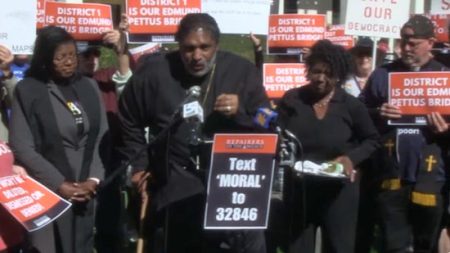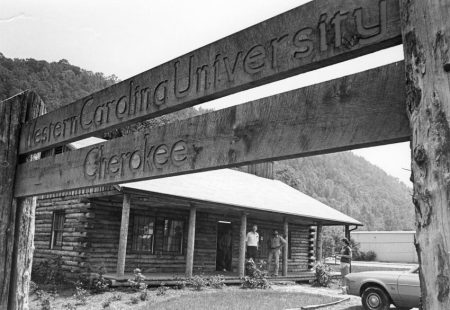Housing Opportunities for People Everywhere (HOPE) and You
 |
| Gene Bell, Executive Director of Asheville Housing Authority |
Shelter is fundamental to survival. This is true for citizens of Asheville, the United States, and the world. Shelter we can afford — affordable housing — for families at low income levels remains an obvious need.
BY DARYL EASON
Though some may view these sites unfavorably, public housing remains a vital national resource for affordable housing. Public housing rents are set at levels that make them affordable even to families with the lowest of incomes.
Because public housing programs use public money, they are frequently reviewed and studied. Questions are raised by tenants, public officials, and administrators; upon analysis, conclusions are drawn and actions implemented. Ultimately, for better or for worse, these decisions will help determine where and how the neediest citizens can live.
Gene Bell is Executive Director of the Housing Authority of the City of
Asheville, which is one of the leading providers of affordable housing
to Asheville residents. Like many of his colleagues in public service,
Bell believes that public housing should, and can, be affordable and
safe. But just as a car needs regular maintenance, and private
homeowners regularly paint, maintain, and upgrade their houses, the
nation’s public housing stock also needs to be upgraded and, in some
cases, replaced.
One of the programs that might help upgrade the region’s stock of
public housing is HOPE VI. Created by Congress in 1992, HOPE VI is a
competitive grant program under which public housing authorities
(PHAs), local entities that administer federal housing programs, apply
to the U.S. Department of Housing and Urban Development (HUD) for
funding to redevelop or demolish public housing sites.
The funding is applicable only to public housing that meets a “severely
distressed” qualification, meaning the development “requires major
redesign, reconstruction, or redevelopment, or partial or total
demolition, to correct serious deficiencies in the physical plant of
the project.”
Asheville is the only larger city in the state whose Housing Authority
has not yet pursued HOPE IV funding, according to David Nash, Deputy
Director of the Housing Authority of the City of Asheville. Now, as it
pursues HOPE VI funding for the first time, the Housing Authority is
studying which of its existing housing developments might be subject to
replacement under the qualifications established by Congress 20 years
ago.
In the current draft of its Study of HOPE VI for Asheville, the H.A.
lists Aston Park Tower and Garden Apartments and Lee Walker Heights as
severely physically distressed and therefore HOPE VI candidates.
Pisgah
View Apartments, in this draft, remain as functionally obsolete and a
possible HOPE VI candidate. The study will be presented to City Council
on Tuesday, March 24, 2009.
If the HOPE VI application is at first unsuccessful, according Bell and
Nash, it’s very likely that it will be resubmitted the following year.
If still unsuccessful, other funding options will be reviewed to see if
a development can be packaged. Those other potential funding sources
include:
• Public – CDBG and HOME
• Section 8 Project-Based Vouchers
• Section 9
• NCHFA Homeownership Programs
• Private – Low Income Tax Credits
• New Market Tax Credits
• Partnering with Large Local Employers
According to Bell, as long as no development has been chosen as the
HOPE VI site, and there’s no guarantee that an application would
succeed, it would be highly premature to begin any relocations of
tenants. Homes will need to be vacated only if a financial package can
be put together to replace already existing homes. Though just one
element of a needed financial package, “HOPE VI is a big funding
stream, so, if we don’t get that than it will be harder to put the
package together,” commented Mr. Nash.
The H.A. is continuing brainstorming strategies that will assist
residents through a potential relocation transition if funding from the
HOPE VI grant is received. Also, according to Bell and Nash,
relocations simply are “not going to happen in the next year.” The
application and planning process is, by rough estimation, an
eighteen-month to two-year process.
In situations where a relocation process will be implemented, the H.A.
expressed a willingness to provide financial relocation benefits that
will go beyond legal requirements. Exact amounts have not been figured,
but it was expressed that the H.A. “will pay for relocation costs up to
a certain reasonable amount.” This includes utility transfers,
deposits, and moving costs.
Bell and Nash also emphasized that residents who are moved would be
relocated into units comparable to, or even better than, what they have
now. Among the relocation options are:
• Moving to another public housing unit in another development.
• A voucher to rent from the private sector (Section 8 Voucher Program)
• Moving into a subsidized housing development that the H.A. doesn’t manage but could assist in getting into
• Taking advantage of home ownership opportunities
The H. A. is nearing the point of deciding what its next steps will be,
and its “mission-driven” decision will be based on “wanting healthy,
low income housing communities.”








